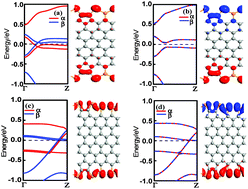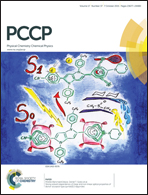Magneto-electronic properties of graphene nanoribbons with various edge structures passivated by phosphorus and hydrogen atoms
Abstract
The electronic and magnetic structures of graphene nanoribbons (GNRs) with various edge structures passivated by P atoms are investigated systematically, and compared with H passivation as well. GNRs with the entire reconstructed Klein edge or armchair edge are found to be nonmagnetic regardless of P or H passivation. However, if the edge of GNRs is a mixture of zigzag edge and reconstructed Klein edge, they are nonmagnetic for H passivation but significantly magnetic for P passivation, which could be attributed to the “charge transfer doping” effect. And the corresponding magnetic device shows a noticeable negative differential resistance phenomenon and an excellent spin filtering effect under AP configuration, which originate from the special energy band structure. The GNRs with zigzag edge, reconstructed Klein edge, or mixed edge shapes are all metals in the nonmagnetic state regardless of the H or P atoms involved. The relationship between the energy gap and the width in armchair-edged GNRs by P passivation with a dimer structure also satisfies the 3p periodicity, but different in detail from the case of H passivation. The calculated edge formation energy indicates that P-passivated GNRs are energetically more favorable, suggesting that they can stably exist in the experiment.


 Please wait while we load your content...
Please wait while we load your content...